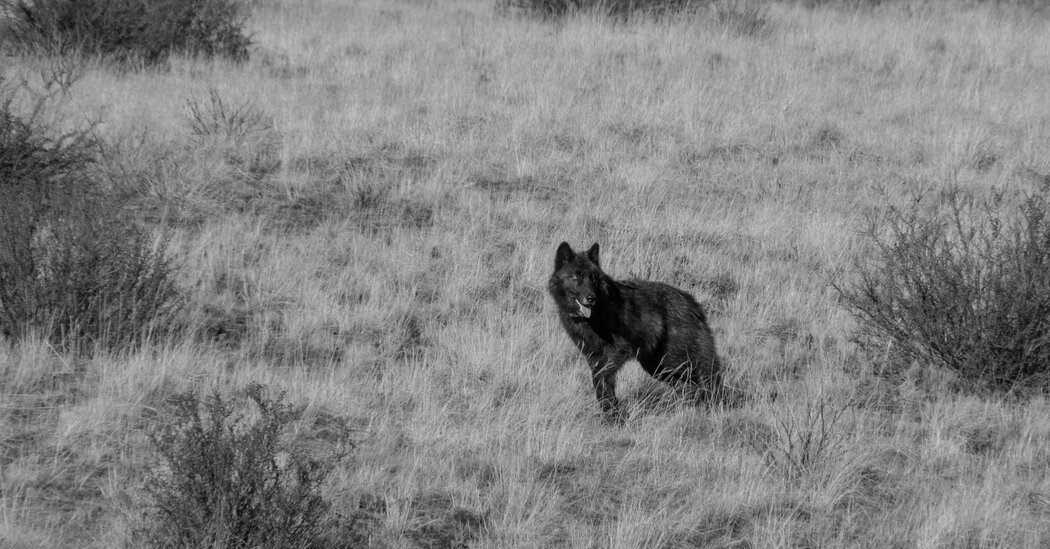Last Friday, the California Department of Fish and Wildlife announced it had made the difficult decision to kill four members of one of the state’s 10 known wolf packs in an area just north of Lake Tahoe. The pack members had killed dozens of cattle and ranged near homes and people.
Given the near-total eradication of gray wolves from the western United States by the early 1900s, it is extraordinary that the species now dwells in a populated valley between Sacramento and Reno. Yet the fierce conflicts created by the wolves’ arrival expose major shortcomings of America’s efforts to bring back these predators. Decades after deciding to help wolf, grizzly bear and mountain lion populations recover, America still lacks the policy, management tools and funding to support their coexistence with people.
From the 18th through the early 20th century, the United States systematically exterminated large carnivores through bounties and nearly limitless public hunting. Then, thanks to the parks, wilderness areas, hunting regulations and endangered species laws created by the first wave of conservation activism, certain species were able to recover — some through deliberate reintroductions (when they’re released by wildlife managers into the wild) and others on their own.
Wolf numbers grew from a reintroduced population of 66 in Yellowstone National Park and nearby areas of Idaho, to over 3,000 across the West. Grizzly bear numbers grew from hundreds to over 2,000 in four Western states. Mountain lions, whose population was sharply reduced by hunting, now roam across more than half of the country.
Increasingly, these species have expanded into landscapes where many people live and work. In these areas, wolves, bears and mountain lions navigate a patchwork of farms, suburbs and highways, where they encounter more livestock, pets and people — and often, fewer of their natural prey. The resulting conflicts pose challenges that the current way of doing conservation isn’t well equipped to handle.
California’s wolves are a case in point. The state’s first pack in about a century arrived naturally in 2015 from Oregon — descendants of Yellowstone and Idaho wolves whose offspring gradually expanded westward. After they had a period of slow growth, California documented a number of new packs over the past five years, reaching 10 packs last spring. This included the Beyem Seyo pack, which moved into the Sierra Valley, a broad, beautiful area of meadows, working ranches and hot springs beloved by aging hippies and Bay Area tech workers.
This spring and summer, the wolves began spending much of their time in privately owned pastures. Ultimately, they killed 87 cattle over about six months — an unusually high number for a single pack of wolves.
Ranchers and wildlife managers scrambled to respond. The state deployed a “strike team” to work around the clock chasing wolves away from livestock, shooting at them with bean bags, and erecting new fencing. But the wolves found ways around these deterrence efforts and killed even more cattle.
In removing members of the pack, California joined other states, Canadian provinces and European nations in using lethal control measures on wolves. While their approaches vary — some allow hunting to limit wolves from certain areas, and others remove only nuisance animals — all aim to lower attacks and foster public tolerance for the species. The problem is that wolves tend to recolonize the same areas, restarting the cycle of conflict.
We lead a research team that studies California’s wolves with the goal of supporting sustainable coexistence between wolves and people. At kitchen tables, coffee shops and community events, we have heard alarm and frustration. We have also heard, even from ranchers heavily impacted by wolves, a willingness to live with them — just not at an unsustainable cost.
If we want to see the continued recovery of wolves and other wildlife, it is critical that environmental organizations and agencies form alliances with the affected communities — especially private landowners, who steward about 60 percent of the land in the United States. The next era of predator recovery will rely on private citizens and organizations to manage their land in ways that minimize conflict.
Fortunately, livestock producers and wildlife managers around the West have been experimenting with strategies to minimize the need to remove predators. These efforts include removing livestock carcasses to reduce predators’ attraction to ranches, increasing human presence to scare them away (known as “range riding”), deploying deterrents like flashing lights or loud music, and more.
Some ranchers have also adjusted the timing or location of calving and grazing to limit a herd’s exposure to predators. These approaches also benefit from compensation for livestock deaths, and assurances that if all else fails, lethal tools are on the table.
As ecologists, we see the loss of habitat for wild prey as a major, underappreciated contributor to livestock kills. A wolf, bear or mountain lion that cannot find an elk or deer to eat will simply try harder to hunt the next available cow. In Northern California, the solution is to restore degraded forest and grassland habitat for prey; in the Northern Rockies, it is to protect habitat from development to avoid a spiral into ever-greater conflict.
This requires expanded funding. The U.S. Fish and Wildlife Service and Department of Agriculture have in recent years improved their coordination and funding of conflict mitigation, but their efforts are limited to a few states and practices. Philanthropists have a key role to play, and public-private partnerships — like the recent $100 million investment in a wildlife crossing near Los Angeles — offer a model that should be applied to conflict reduction.
Without compensation and incentive programs, the costs of predator conservation mandated by federal and state governments is borne disproportionately by a sliver of private citizens, which increases mistrust and the likelihood of local resentment, conflict and illegal poaching.
Americans broadly support the restoration of wildlife, including large predators. Yet policy has drawn heavily on wilderness, endangered species protections and limits on hunting. Going the distance will require sustained collaboration and investment in the communities we are asking to live alongside these animals.
Arthur Middleton and Justin Brashares are professors of environmental science, policy and management at the University of California, Berkeley. Kaggie Orrick is the director of the university’s California Wolf Project.
The Times is committed to publishing a diversity of letters to the editor. We’d like to hear what you think about this or any of our articles. Here are some tips. And here’s our email: [email protected].
Follow the New York Times Opinion section on Facebook, Instagram, TikTok, Bluesky, WhatsApp and Threads.
The post The Reality of Living With Wolves, Bears and Mountain Lions appeared first on New York Times.




